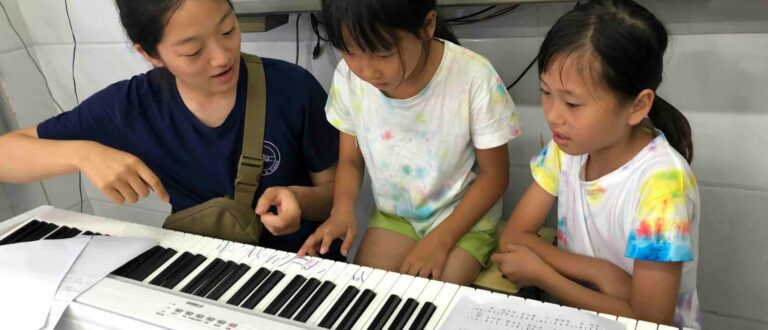The temperature was not warm at all on that day in June but sweat still came off my back. In the open-air meeting room, suited men and women flowed into the venue, and media reporters, with their giant black cameras, slowly positioned themselves in the back.
It was June 27, 2019 when the Beijing Swift Project was officially launched on the rooftop of Qianmen SOHO. In the next few months, several buildings under SOHO China would implement artificial nest boxes for the Beijing swifts (a subspecies of the common swift or Apus apus), to provide a breeding ground for those little creatures that lost their homes in the waves of urbanism. As one of the “Swift Ambassadors,” I was invited to share my thoughts on protecting these birds. In front of those entrepreneurs, I began: “The swifts stay all summer in Beijing. But where will they go in the rest of the year?”
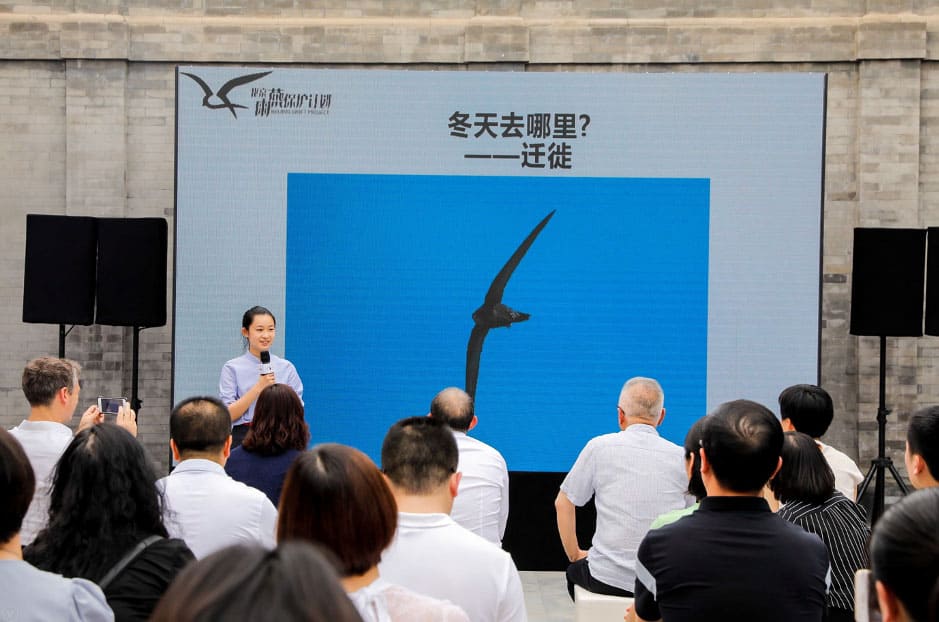
Although I was extremely nervous during the meeting, I was still thankful for this opportunity to spread the story of the Beijing swifts and rally support from people to find a new habitat for these unique birds.
A Journey That Started in Africa
I have always been fascinated by different animals, although my story with the birds started in Africa just recently. I could read all day, repetitively flipping through the few pages in a book, looking at the pictures of animals. And when I was eight, I went hiking in Yunnan and fell in love with the rays of sun beaming through forest leaves, and the sage-colored mosses creeping on the rocks. I longed for the place and even cried after returning.
But I rarely noticed the birds back then.
In 2017, our family traveled to Tanzania. And I only realized later that this was a life-changing journey. Like most travelers in Tanzania, our goal was the “big animals”: lions, giraffes, and elephants. Yet by the middle of the trip, staring at sleepy lions and uniformed herbivores, we felt a little bored already. Under the scorching sun, I felt trapped in perfectly still air.
And one of our group members, a birder, changed the story. In the hottest noon, she led us, a group of restless kids, to find the little creatures that lived around our camp. She led us to the sunbirds resting on the trees, the secretarybirds roaming on the savannah, and the Egyptian geese wandering in the lakes. I saw, at that time, how so many different kinds of interesting birds were there, hidden in the least noticeable corners.
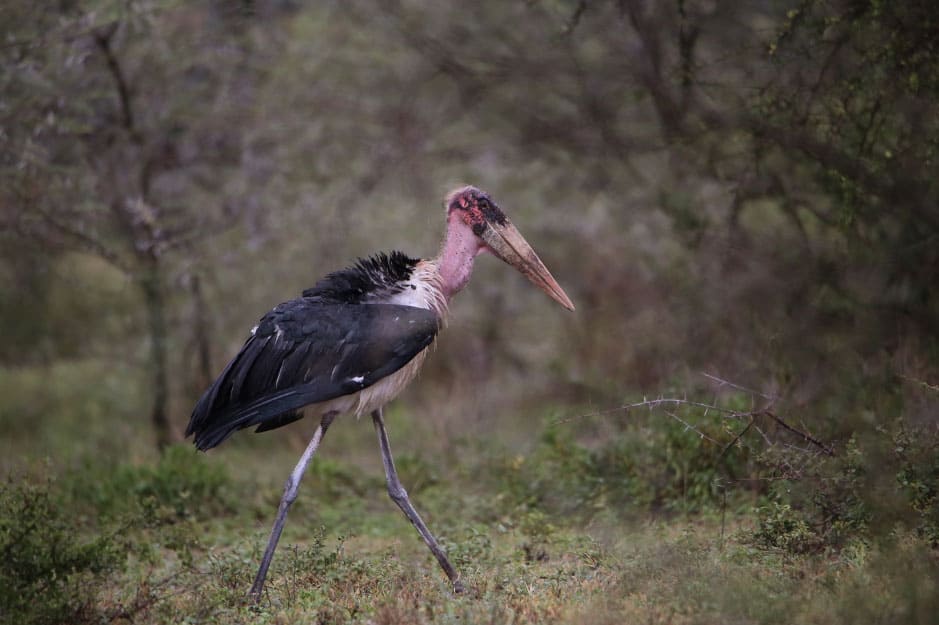
By accidentally peeking from this newly opened window, my birdwatching journey began. And I have never turned back since then.
A “Birding Fanatic” Left Alone in the Forest
Since that trip to Africa, I’ve started a mode of birding-around-the-world. From around Beijing to as far as South America, I’ve seen over 1,500 species of birds and become quite literally a “birding fanatic” and have had fun memories.
I’ve been to Yunnan, a magical land where two-thirds of all the birds in China fly high, numerous times. On most occasions, we would birdwatch in some remote villages that tourists wouldn’t even bother knowing. My most unforgettable memory happened in Pudacuo National Park, a traveling destination packed with tourists.
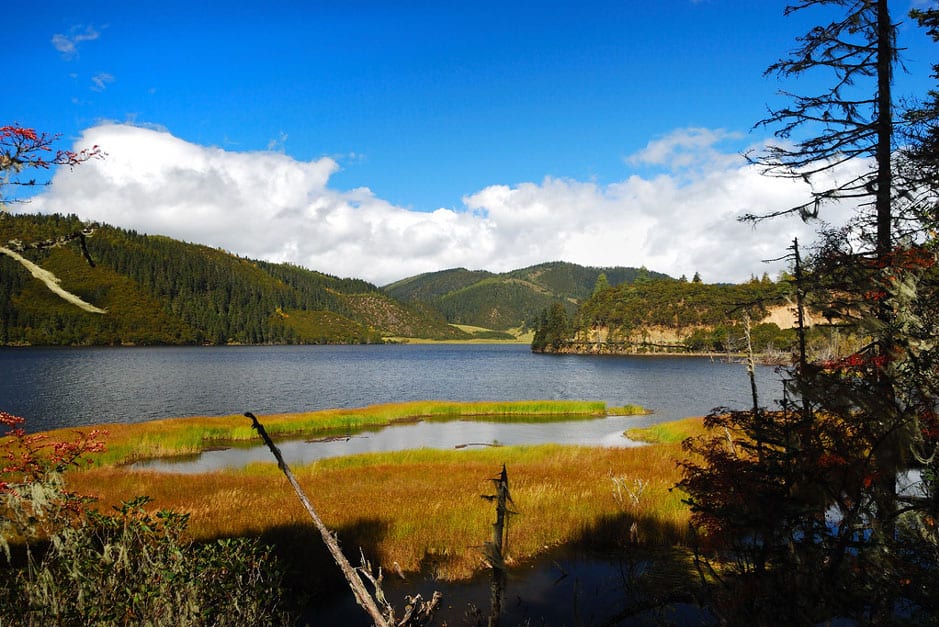
As we walked along the trail, we found many more birds than I previously expected. New bird chirps and mysterious noises in the undergrowth attracted our attention, and we would stop every few meters, sometimes even going into the forest. We would end up spending seven hours straight on a three-kilometer trail that would be hiked for more or less one hour. When we reached the bus stop at the end of the trail, the sky is already darkening.
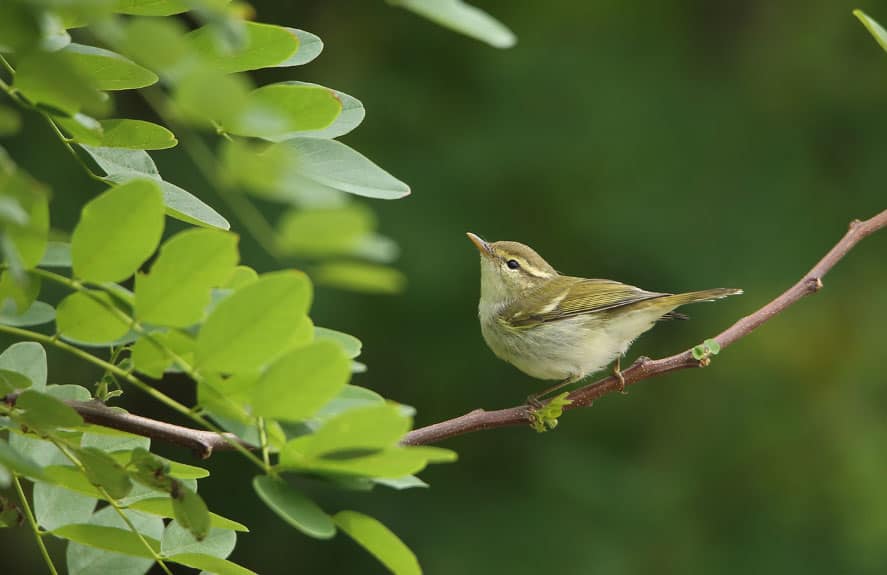
Any outside automobiles are banned in the National Park, so we had to wait for the buses that navigate between locations.
10 minutes, 20 minutes, 30 minutes… time slowly ticked, but no cars nor even a living human were there. Under the slate grey sky, the tourist center laid dead silent and the giant and unmoving spruce trees seemed to emanate an ominous shade. Our confusion continued and got even more shocked when we looked at the notice board: “What? The National Park closes up at 6 p.m.? The bus stations close at 5 p.m.?” That meant the buses already stopped coming for 2 hours! “Are we going to spend the night in the forest, where anything can happen?” We were worried and anxious, like someone trapped in a maze.
Eventually, we saw on the notice board the telephone number of the Public Security Bureau of Forestry. A few minutes later, two cops arrived in front of us, with their mobile car siren screaming.
“What is the matter? How long have you stayed? Why haven’t you left already?” Just as we were getting on the mobile, the police fired the questions at us. We had to tell them how we missed the clear-out because we were too engrossed by birdwatching, and how we never noticed that the rest of the tourists already left, and how we spent seven hours on the three-kilometer trail.
Obvious enough, the police did not believe what we said and queried us back and forth before driving us back to the hotel. As I sat on the back row of the cop, with metal railings on both sides, I felt like an escapee caught by the police.
As I reflected while on my way back, I thought it was quite terrifying being in the mountains alone, much more being rescued by police. It was an unusual episode in my birdwatching journey. When we were anxiously waiting for the bus, the forest was still alive: the goldcrest jumped around from tree to tree, showing off its fire-colored crest, and the Eurasian wren wagged its tail by the trail. The adventurous excitements, free-flying birds, and the power of lives in nature charmed up this unique experience and only led me to liking birdwatching even more.
Spreading the Love
My skills have gradually improved after countless birdwatching trips. From a know-nothing novice who can only follow others and ask, “Where is the bird?” I can confidently say I can now find and identify birds swiftly.
One day, a thought flashed through my mind: “Why don’t I spread such a remarkable activity to more people?” As a result, I launched the Birding Club in Keystone.
I have absolutely no experience initiating and leading a club. During our first meeting, I couldn’t even face the members! I couldn’t believe that all those people signed up to the club, and I couldn’t think that I would, soon, talk to all of them for the next 40 minutes. Before my class, I squat at the corner of the classroom, unready to speak. I asked myself: “Is there something missing in your mind? How could I ever imagine that I could teach them about birds!”
But I couldn’t squat there all day. Eventually, I stood up, with my palm sweating profusely, and started the first Birding Club lesson. My talking speed was so rapid that I finished the lesson within 20 minutes when it was initially planned for double that time. I had to find something for the members to watch to pass the next 20 minutes. Unfortunately, the documentary did not play. Either my laptop hung, or the file needed VIP access to view. Minutes ticked by, and there was still nothing to show the students. In the end, I found one documentary and played it for two minutes before the class finished.
Although the first lesson was a near disaster, after times of training, I became more confident, more experienced, and my lessons are more attractive. In the one-and-a-half years that have gone by, I’ve performed nearly 30 mini-lessons, hosted six outside-campus birding trips, and organized two lectures with experts. But the thing that has rewarded me the most is how the students slowly begin to like these “feathered wings,” and will sometimes show me the birds that they photographed when traveling.
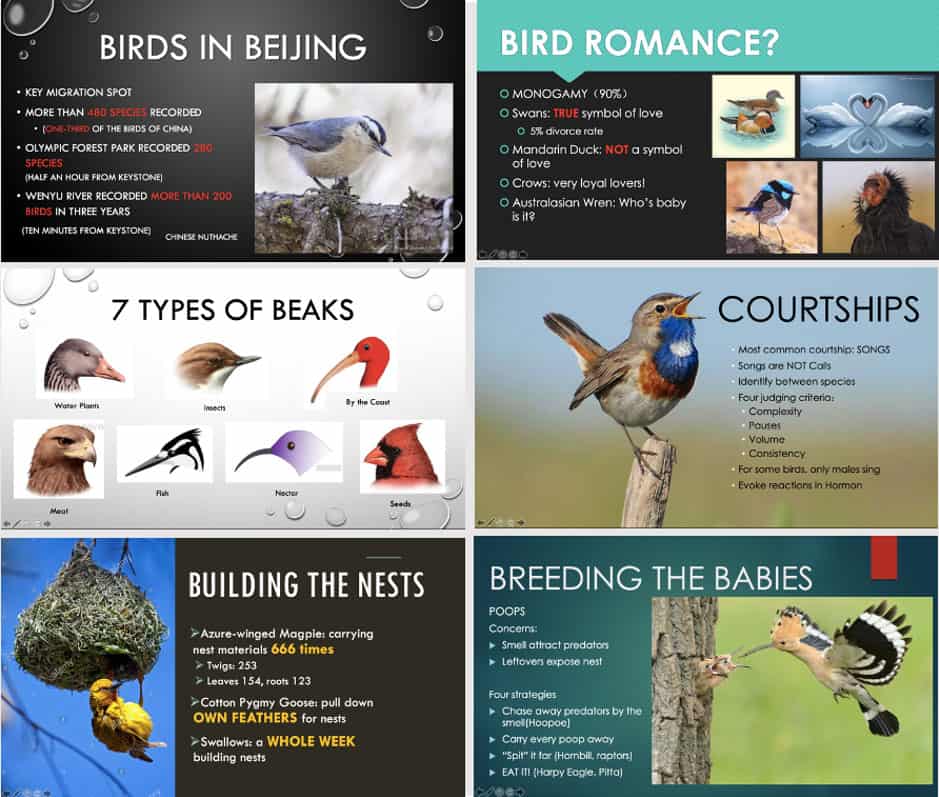
I’ve also created my official account and written around 40 original articles to raise awareness on birds and other wildlife. From recording my traveling experiences at first to writing about specific animals (for example, a disclosure on the wing structure of the club-winged manakins) and debating topics like “Why we shall protect animals,” the interactions of people and animals in Tibet, and the conflicts between animal welfare and nature conservation, I went from merely “liking animals” to digging into the topics of nature conservation.
Voicing Out for Those Who Cannot Speak
An encounter in Yunnan in December 2018 strengthened my dream to participate in nature conservation in the future. In a national park in the city of Pu’er, I sneaked in the “No Tourists” area while no one was around. The midday sun warmed my back, and the air smelled tropical, but I still felt cold on the inside. Following the clamor of animals, I found what I was searching for: a line of cages, with some irritated macaques, and stressed eagle owls. I started to record videos with my camera and my shaking hands. Because I was way too nervous, there were several lapses in my footage so I had to redo the filming. After finishing the record, I scrambled out of place, not even daring to look back.
Here you might be wondering, what was I doing in a no-tourist area?
A few days before filming, I came to this national park with the idea of viewing wildlife. This place was advocated as the “heaven for interacting with animals,” and indeed, the animals seemed to be roaming free, ready for the tourists to see at a close distance. However, I soon realized that something was amiss: elementary feathers are necessary for a bird to fly, yet they were gone on the owls here; when the tourists come close, these owls could only stumble away. Nocturnal animals should appear only at night, but here, they stayed on the treetops in broad daylight. To discover out what was happening, I launched “personal investigations” and eventually found these cages that backed up my assumption: the park caged the animals every night in a confined little space and release them in the day, to conjure up a scene of “animals peacefully interacting with humans.”

But how could no one notice that these were against an animal’s natural behaviors? How could anyone miss such blatant deceits and leave this park satisfied, thinking that “this is how we interact with wildlife”? I realized that, at least in China, public education on nature conservation still has a long way to go. Many people assume that wildlife conservation is to confine the animals while feeding them well; still, many others believe that wildlife is a tool to play with.
When I wrote my observations, I realized how I could use my power to inform other people, and perhaps change their behaviors, when a stranger who read the article told me, “I will never go there again.” Yes, I am going to tell people how conservation isn’t “saving” the animals and keep them in a sanctuary, nor is it as simple as “putting them into a nature reserve.” It is using scientific methods to increase the population of animal species and it is considering the need for animals and people to realize a strong correlation fully.
When I first tried birdwatching two years ago, I never considered it as my lifelong goal. But now, through finding these feathered heralds, preparing the lessons in the Birding Club, and organizing more birdwatching trips, I have established my future goal.
When I was young, hearing stories about burned and chopped rainforest always made me feel helpless and sad. But now I realized, although coming to the Anthropocene is unavoidable, we can still change our attitudes towards nature and wildlife. Birdwatching, for me, is not merely an interest, but also a way to view the world, and a forever lighthouse to light up my future path towards nature conservation.
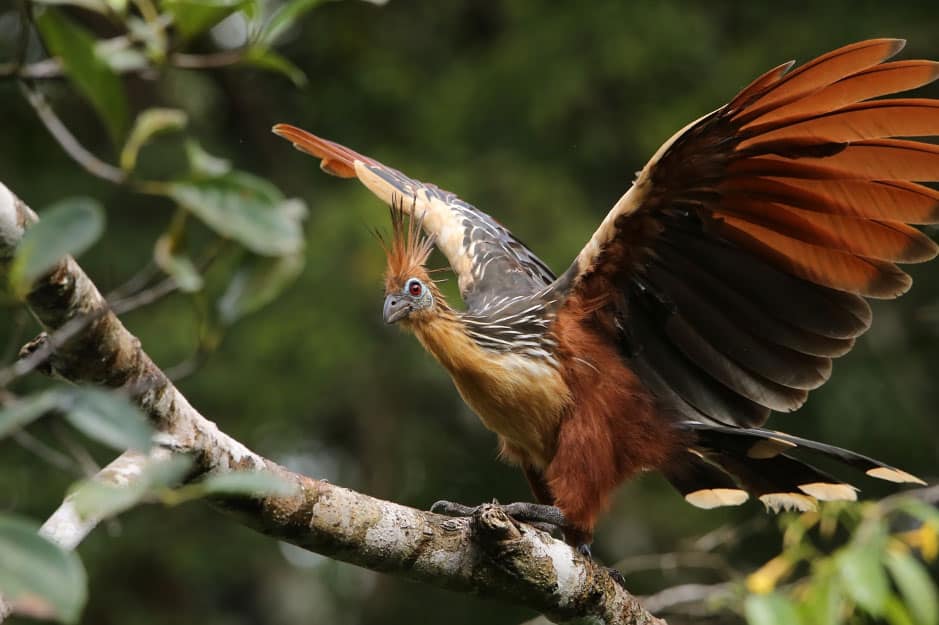
There will always be dark corners in the world, but that is why we endeavor to fight: to make our earth a better place and a better home.
Article written by ninth-grader Ariel Chen
Animal pictures taken by Ariel Chen







